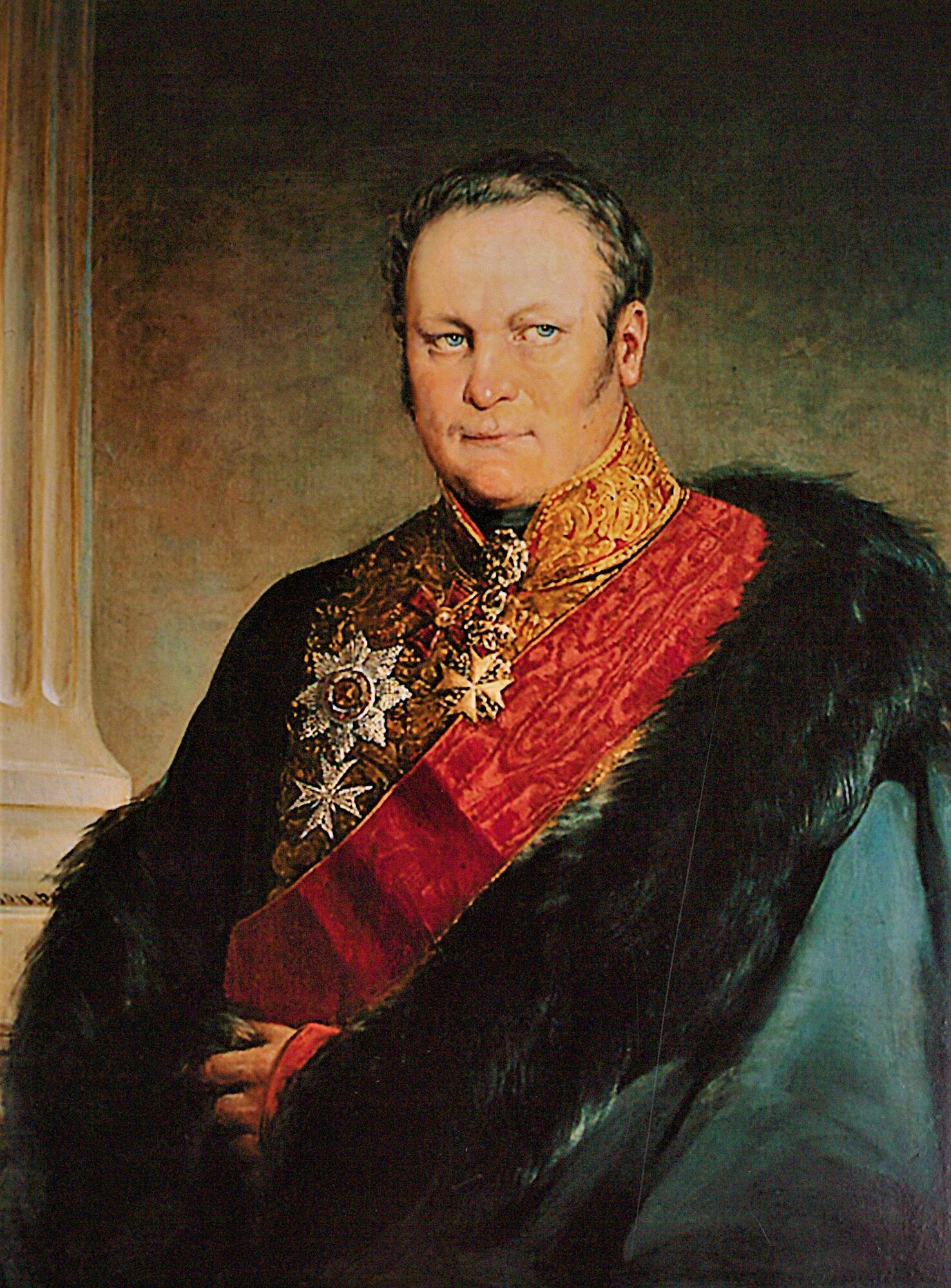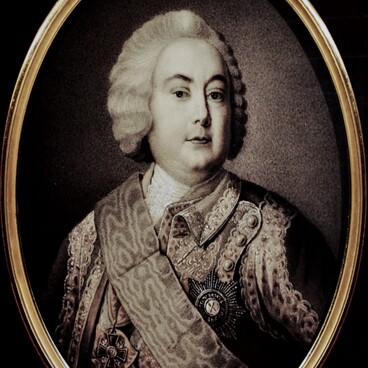The British artist Christina Robertson painted a portrait of Boris Yusupov, the son of Nikolay Yusupov and Tatiana Potemkina. The museum has a reproduction of this portrait printed on a photographic film.
Boris Yusupov was born on July 9, 1794. After his examinations at the testing committee of the St. Petersburg Pedagogical Institute, he became a ceremonial marshal, then the district marshal of the nobility in St. Petersburg, and later, a deputy of the Assembly of the Nobility for Tsarskoye Selo district. For several years he managed the expeditions of the Badge of Merit and the Order of St. Anna. From 1840, the prince served on the St. Petersburg Board of Trustees, was a member of the Manufacturers’ Council at the Ministry of Finance and manager of the Map Collection Expedition. In 1848, he became chamberlain — as a rule, people of this rank became the administrators of the Tsar’s court.
Contemporaries noted two main features of his character: caring and practicality. He happily devoted himself to farm management, and always treated his serfs with care. In times of crop failures, Boris Yusupov ordered to help the peasants, and his villagers did not know hunger. When cholera raged in Little Russia, he arrived in Rakitnoye village, where the epidemic was particularly severe, and took care of the sick himself. His entourage pointed out that the prince always liked to talk to his peasants, to care for them, and to protect their interests.
It was under Boris Nikolayevich that the family paid off numerous debts, and the zealous owner even augmented the family fortune.
Under him, the construction of the Rakityansky estate house began as well. Talented Moscow architects worked on the project; a well-known Italian Giacomo Florenti made a part of drawings for the palace. The architecture of the palace incorporates classicist techniques, baroque elements and forms of Russian architecture. The serfs did the construction: they began the work in 1840 and finished it 6 years later.
Boris Nikolayevich was married twice: his first wife was Princess Praskovya Scherbatova (she died during childbirth), his second wife was Zinaida Naryshkina, a well-known socialite, later Countess de Chaveau. From the second marriage was born his only son, the last direct male descendant in the Yusupov family, prince Nikolay Yusupov Jr.
Boris Yusupov died before his old age: he died of typhus on 25 October 1849, aged 55.
Boris Yusupov was born on July 9, 1794. After his examinations at the testing committee of the St. Petersburg Pedagogical Institute, he became a ceremonial marshal, then the district marshal of the nobility in St. Petersburg, and later, a deputy of the Assembly of the Nobility for Tsarskoye Selo district. For several years he managed the expeditions of the Badge of Merit and the Order of St. Anna. From 1840, the prince served on the St. Petersburg Board of Trustees, was a member of the Manufacturers’ Council at the Ministry of Finance and manager of the Map Collection Expedition. In 1848, he became chamberlain — as a rule, people of this rank became the administrators of the Tsar’s court.
Contemporaries noted two main features of his character: caring and practicality. He happily devoted himself to farm management, and always treated his serfs with care. In times of crop failures, Boris Yusupov ordered to help the peasants, and his villagers did not know hunger. When cholera raged in Little Russia, he arrived in Rakitnoye village, where the epidemic was particularly severe, and took care of the sick himself. His entourage pointed out that the prince always liked to talk to his peasants, to care for them, and to protect their interests.
It was under Boris Nikolayevich that the family paid off numerous debts, and the zealous owner even augmented the family fortune.
Under him, the construction of the Rakityansky estate house began as well. Talented Moscow architects worked on the project; a well-known Italian Giacomo Florenti made a part of drawings for the palace. The architecture of the palace incorporates classicist techniques, baroque elements and forms of Russian architecture. The serfs did the construction: they began the work in 1840 and finished it 6 years later.
Boris Nikolayevich was married twice: his first wife was Princess Praskovya Scherbatova (she died during childbirth), his second wife was Zinaida Naryshkina, a well-known socialite, later Countess de Chaveau. From the second marriage was born his only son, the last direct male descendant in the Yusupov family, prince Nikolay Yusupov Jr.
Boris Yusupov died before his old age: he died of typhus on 25 October 1849, aged 55.



